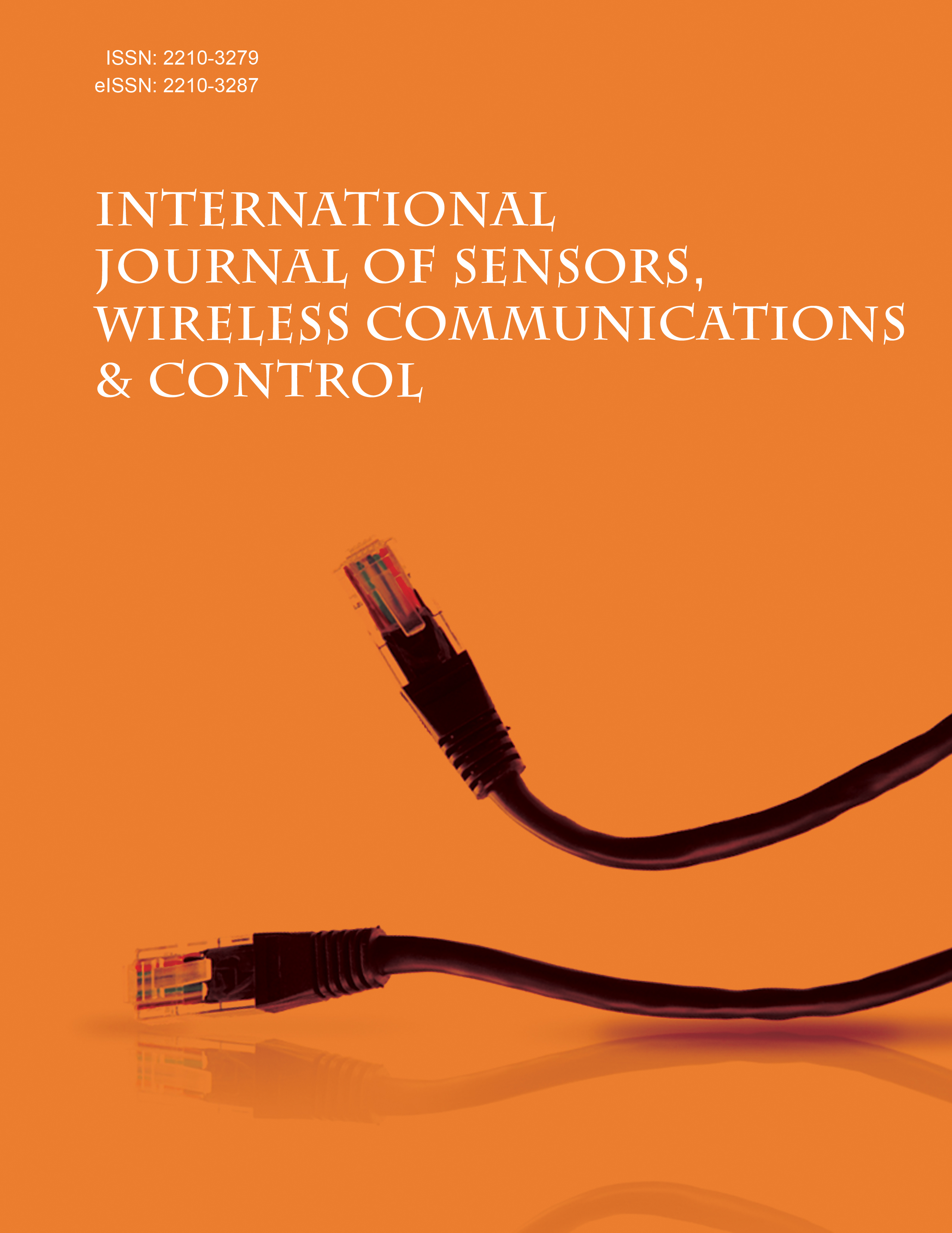- Home
- A-Z Publications
- International Journal of Sensors Wireless Communications and Control
- Previous Issues
- Volume 2, Issue 3, 2012
International Journal of Sensors Wireless Communications and Control - Volume 2, Issue 3, 2012
Volume 2, Issue 3, 2012
-
-
Characterization of Yarn Mass Parameters and Production Characteristics Using Optical Sensors, Capacitive Sensors and Image Processing
More LessAuthors: Vitor Carvalho, Nuno Goncalves, Filomena Soares, Rosa Vasconcelos and Michael BelsleyThis paper describes a custom developed yarn parameterization system to characterize yarn diameter, mass and hairiness. The system has been named YSQ (Yarn System Quality) and is based on capacitive and optical sensors generally used to infer information about yarn quality. The designed sensor system is fully described. All data acquisition and processing is performed using a DAQ board from National Instrument Read More
-
-
-
Measuring Yarn Diameter Using Fast and Inexpensive Optical Sensors
More LessAuthors: M. Tresanchez, T. Palleja, M. Teixido and J. PalacinIn this paper, the inexpensive optical sensor of a common computer mouse is proposed as a tool to measure the yarn diameter. In the textile industry this measurement tool has many applications in quality control and assurance. This optical sensor operates in combination with a plastic lens and an external LED to complete an inexpensive and compact vision system. The optical sensor includes a fast optical monochrome Read More
-
-
-
Objective Evaluation of Fibrous Thread Using Optical Sensors
More LessAuthors: Seyed Abdolkarim Hosseini Ravandi and Ramazan Ali AbuzadeMachine vision based systems are increasingly being used in textile quality characterization due to their ability to provide valuable information. The purpose of this study is to review some methodologies of evaluating fiber and yarn using optical devices. Optical and electron microscopes, along with image processing techniques were used to investigate the morphology and cross-sectional shape of electrospun nanofibers. Fibrous Read More
-
-
-
Objective Evaluation of Woven Fabrics Using Optical Sensors
More LessAuthors: Seyed Abdolkarim Hosseini Ravandi and Ramazan Ali AbuzadeFabric surface appearance is one of the most important visible properties of fabrics determining their price and consumer satisfaction. This characteristic is routinely evaluated with reference to a set of visual standards in the textile industry. The visual evaluation is unreliable, time-consuming, inefficient, and, depends on many human factors. Machine vision techniques can overcome these difficulties and evaluate th Read More
-
-
-
The Research of Horizontal Movement Flocking of Multi-agent
More LessAuthors: Zhengquan Yang, Qing Zhang and Zengqiang ChenHorizontal movement in flocking is a common phenomenon in nature. In this paper, a quantitative model was developed to describe the collective horizontal flight of bird flocking. A decentralized feedback control strategy for a group of multi-agents has been proposed. With this control strategy or control law, all multi-agents can move within a certain height range, ensuring that freedom from collisions between neighboring agen Read More
-
-
-
Investigate Efficiency & Reliability of Various Reprogramming Architectures for Wireless Sensor Network: A Survey
More LessAuthors: Veena Gulhane and L.G. MalikThis paper presents a survey on the current state-of-art in various Reprogramming Architectures for Wireless Sensor Network (WSN). Recent research in wireless sensor network has highlighted the importance of supporting the capability for remote reprogramming of sensor nodes via wireless network. Wireless sensor networks are expected to be deployed for long periods of time, and the nodes are likely to need softw Read More
-
-
-
Research on Optimize Design for Multidimensional Parameter Constraint of Data Acquisition System
More LessAuthors: Huiyong Sun and Peng CaoThis paper starts with the introduction of the architecture model of the data acquisition system, In this module, a number of factors are involved in influencing the data acquisition system. The theoretical analysis and deduction result of the various confounding factors, such as the additive noise n0 (t) of signal source, the ripple noise of supply power and the jitter of clock, etc have later been described in this paper. The above thr Read More
-
Most Read This Month
Article
content/journals/swcc
Journal
10
5
false
en


